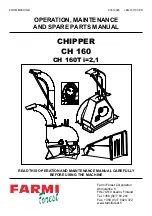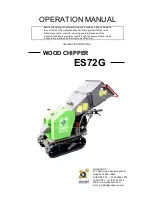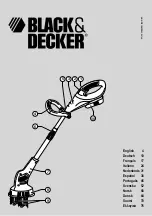
Page 52
Maintenance
Planned maintenance
9 MAINTENANCE
Carefully read the “Safety” section of this manual
before carrying out any maintenance operations.
Do not discharge the refrigerant into the at-
mosphere while the refrigeration circuits
are being drained. Use appropriate recov-
ery equipment.
When the recovered refrigerant cannot be
re-used, return it to the manufacturer.
Do not throw away the waste oil of the
compressor, because it contains refrigerant
in solution.
The waste oil must be returned to the manu-
facturer.
Unless otherwise specified, the operations described
below may be carried out only by a trained mainte-
nance operator.
9.1 General requirements
Units have been designed for continuous operation,
providing that they are subjected to regular mainte-
nance, within the limits specified in this manual. Each
unit must be serviced according to the programme by
the User/Customer, and must be inspected at regular
intervals by the personnel of one authorised Service
Centers.
It is the responsibility of the User to meet these main-
tenance requirements and/or to enter into an agree-
ment with one of authorised Service Centers, so as to
properly safeguard the operation of the appliance.
During the warranty period, in case of damage or fail-
ures caused by improper maintenance, manufacturer
will not refund the costs incurred to repair the appli-
ance in its original state.
The provisions of this section apply only to standard
units; according to the order requirements, other doc-
umentation may be added, concerning any modifica-
tions or supplementary accessories.
9.2 Planned maintenance
Maintenance inspections must be carried out accord-
ing to the program below, by a qualified person.
As a general rule, units cannot be repaired directly by
the user, who shall not try to service or repair any fail-
ures or anomalies identified during daily inspections.
If you are in doubt, please contact authorised Service
Centre.
Operations
Daily
Weekly
Monthly
Beginning
of season
End of season
Check the temperature
of the leaving fluid
Check the pressure drops
in the heat exchanger
Check for electric
absorption
Check suction pressure
and temperature
Check delivery pressure
and temperature
Check the oil level
in the compressor
Check that there are no gas
bubbles in the liquid line
Check that the fins of the
external coil are clean (if any)
Check the operation
of the oil heaters
Check the remote
control switches
Check the operation
of the LP pressure switch
Check the operation
of the HP pressure switch
Check the insulation
of the heat exchanger
Check that terminals
are tightened
Check that the terminals’
screws are tightened
Clean the exterior of the
unit with water and soap
Check the density
of the antifreeze (if any)
Check the operation
of the flow switches
Check the operation
of the solenoid valve
•
•
•
•
•
•
•
•
•
•
•
•
•
•
•
•
•
•
•
•
•
DANGER
DANGER
Summary of Contents for AQVC 105
Page 60: ...English Page 59 Note...
Page 61: ...Page 60 Note...










































